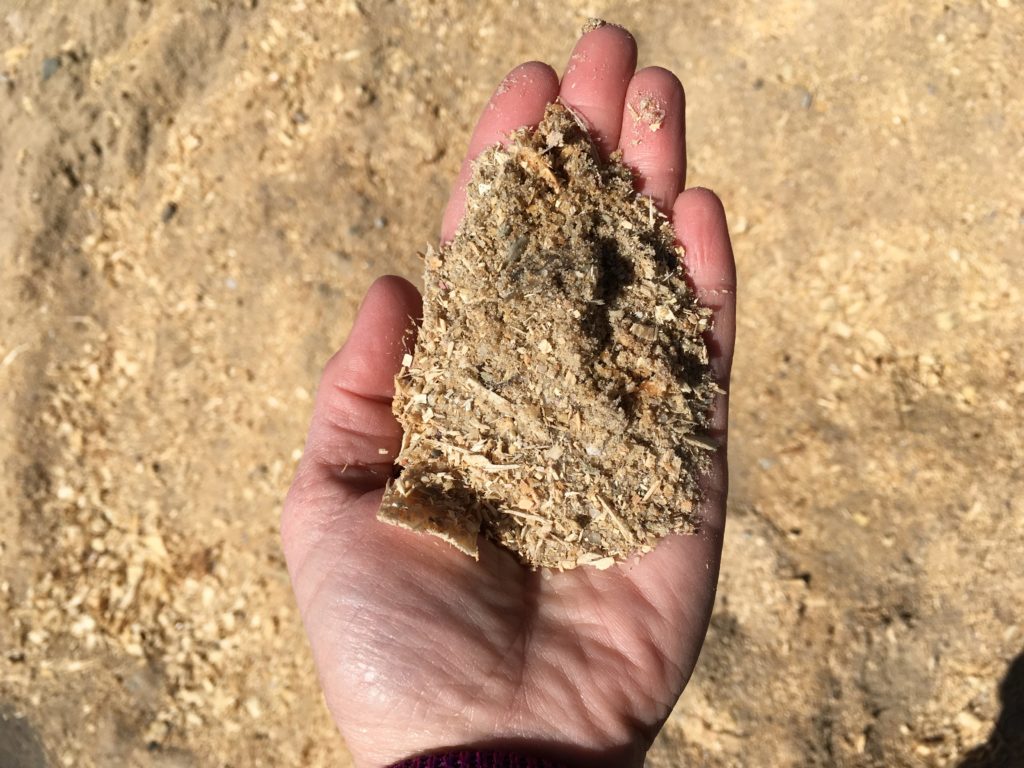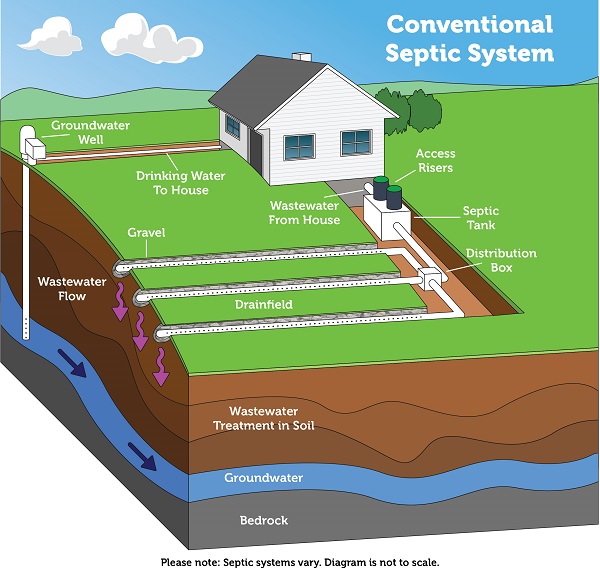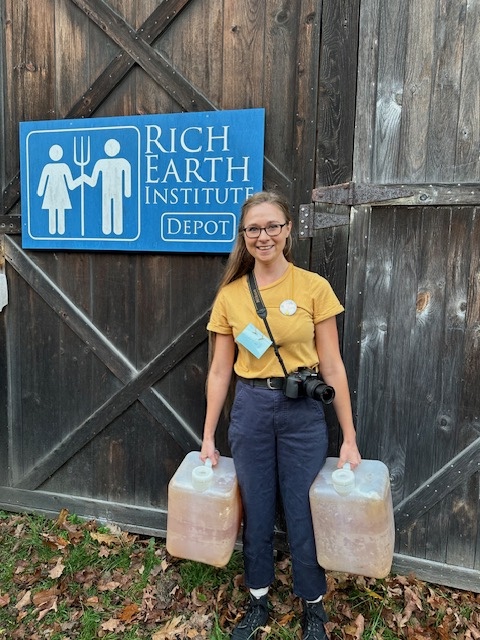
Wastewater terminology is so important to become familiar with. Not only does it empower you to say the words, it makes you dive a little deeper into understanding them.
With that in mind, we’ve created a (layman’s) Wastewater Terminology page for you here. It’s a live page we want to keep adding to with your help. Got a term you don’t understand and even when looking it up, don’t see why you should care about it or how it pertains to you?
We’re here to help.
Got a term you want defined so that you better understand it? Reach out here!
Let’s start with these and keep building:
BOD – biochemical oxygen demand: A measurement of the amount of oxygen consumed by bacteria and other organisms as they decompose organic matter in a water sample. If a sample has a high BOD, there is a lot of organic matter in the sample. A septic system or sewer that is working well should have low BOD in the water before it reenters the ecosystem. Learn more from this video.
CECs (contaminants of emerging concern): a general term for a diverse group of chemicals that are considered environmental pollutants but are newly identified and/or currently unregulated. CECs include pharmaceuticals and personal care products (PPCPs), PFAS (Per- and polyfluoroalkyl substances), cleaning products, micro/nanoplastics, illicit drugs, caffeine, etc. CECs generally enter the environment through wastewater and then enter water bodies, soil, and groundwater resources.
Conventional System: A conventional decentralized wastewater treatment system consists of a septic tank and a trench or bed subsurface wastewater infiltration system, known as a drainfield. A conventional septic system is typically installed at a single-family home or small business.
The gravel/stone drainfield is a design that has existed for decades. The effluent is piped from the septic tank to a shallow underground trench of stone or gravel. A geofabric or similar material is then placed on top of the trench so sand, dirt, and other contaminants do not enter the clean stone. Effluent filters through the stone and is then further treated by microbes once it reaches the soil below the gravel/stone trench. Gravel/stone systems are relatively large in overall footprint and may not be suitable for all residential sites or conditions.
Ecological Sanitation: Ecological sanitation or “eco san” is an age-old sanitation strategy that aims to manage human waste products in ways that sustainably maximize resource value and the health of people and ecosystems. Some example eco san practices include utilizing eco-toilet systems, harvesting rainwater, irrigating with greywater and composting food scraps. All of these practices are based on the foundation of appreciating and valuing resources (like water, nutrients, clean air, healthy soil, etc.) that are essential to the existence of life on earth. Eco san has become a fringe concept in most modern societies around the globe because of the wholesale loss of human connection with nature and the natural cycles of the ecosystems within which we all live and depend upon.
Groundwater: Water traveling below the land surface. Both surface runoff and groundwater travel toward the surface water body within that water body’s watershed area.

Leach Field: The component of a septic system that is designed to transfer wastewater from the septic tank and into the soil allowing it to be disposed of underground through a process called infiltration. Leach fields typically consist of a series of perforated pipes that lay horizontally on top of a bed of sand and/or gravel with high porosity allowing wastewater to quickly absorb into the soil. Also referred to as a soil absorption system (SAS). Centralized wastewater treatment plants also typically utilize similar leaching or soil absorption systems to dispose of wastewater post treatment.
Nitrogen: Periodic table element with symbol N. A colorless, odorless, inert gas, that constitutes 78 percent of the Earth’s atmosphere (as N2). One of three primary plant nutrients (NPK: nitrogen, phosphorus, potassium) required for crops and food production. A significant contributor to water pollution (about 80% entering in the form of urine as urea) and converting into ammonia, nitrate and back to nitrogen gas in wastewater treatment processes. Nitrogen is considered the key limiting nutrient in coastal marine waters causing harmful algal blooms and low oxygen “dead zones” devoid of marine life.
The Nitrogen Cycle is the natural circular (cyclical/repeating) pathway through which nitrogen moves through the environment. Let’s start this journey in the atmosphere where nitrogen makes up around 78% of our air as nitrogen gas or N2. Nitrogen gas, or inert nitrogen, is pulled from the atmosphere through a natural process called “biological nitrogen fixation” which is driven mostly by symbiotic microbes. Fertilizer producers also artificially fix huge amounts of nitrogen using the Haber-Bosch process. Once fixed, nitrogen is bio-available to plants for assimilation into their tissues as they grow. Nitrogen in the plant tissue can then cycle for long periods of time at the soil surface where plants die, decompose and then regrow recycling the same nitrogen repeatedly. If a plant is consumed by an animal, the cycle continues. Once eaten as a plant, some of the nitrogen is then assimilated in animal’s tissues while the remainder is excreted with urine and feces. The excreted nitrogen may continue to cycle in the environment, or it may continue through the nitrogen cycle to nitrogen removal. Nitrogen removal is the process of nitrogen transforming from fixed forms back to inert nitrogen gas and returning it to the environment; this process is also driven by microbes.
This is a lot to wrap your brain around! We found a more digestible breakdown of the nitrogen cycle on this site Science For Kids.
Barnstable County’s website has a great article on cyanobacteria and how nitrogen from fertilizers to faulty septic systems–have introduced an overabundance of nutrients into the environment into an ecologically unhealthy condition called eutrophication (the process by which a water body becomes enriched in dissolved nutrients such as phosphates and nitrogen).
Common Forms of Nitrogen
Nitrogen (N) – elemental form not present in environment.
Nitrogen gas (N2) – inert gaseous form comprising 78% of our atmosphere.
Inert nitrogen – nitrogen gas N2 not combined with any other molecule; inert nitrogen is harmless to people and the environment
Fixed nitrogen – nitrogen that is combined with other molecules and is available for use by plant and animals; also called combined or reactive nitrogen; includes all nitrogen that is not N2 gas such a nitrate, urea, ammonia, nitrous oxide, etc.
Ammonia (NH3) – highly reactive nitrogen/hydrogen molecule present as both gas and liquid forms often used in cleaning products.
Ammonium (NH4+) – ionic form of ammonia common in untreated wastewater as a result of urea degradation.
Nitrate (NO3) – common form in wastewater after nitrification process – highly plant available and readily travels in groundwater and surface waters.
Nitrite (NO2) – unstable dissolved form.
Total Kjeldahl Nitrogen (TKN) – common wastewater analyte comprised of NH4 and organic forms like urea.
Total Nitrogen (TN) – common wastewater analyte comprised of the sum of TKN, NO2 and NO3.
Urea (CO(NH2)2) – organic form predominant in urine and synthetically produced and utilized as agricultural fertilizer.
Nutrient: Chemical substances found in all life on earth; they are used by organisms to support grow, heal, reproduce, and maintain life. The primary plant nutrients are nitrogen, phosphorus and potassium. Other nutrients include calcium, magnesium, sulfur, etc.
PFAS (Per- and polyfluoroalkyl substances): a large group of chemicals that resist water, oil, and heat. They are found in hundred of products ranging from cleaning products, food containers, paints, outdoor equipment, cooking products, water/stain resistant clothing and carpet, and fire-fighting foam. These so called “forever chemicals” do not break down or degrade easily and are thought to persist in the environment and human/animal tissue. Health and environmental concerns around PFAS are increasing and the EPA recently passed drinking water limits for several types of PFAS.
Phosphorus: Periodic table element with symbol P. Derived from rocks in the form of phosphate. Essential for life in all organisms as an important component of DNA, RNA, ATP and phospholipids. One of three primary plant nutrients (NPK: nitrogen, phosphorus, potassium) required for crops and food production. P is the key limiting nutrient in freshwater lakes and ponds contributing to overgrowth and harmful blooms of algae and cyanobacteria.
PPCPs (Pharmaceuticals and Personal Care Products): a group of CECs that include chemicals originating from prescription and over the counter drugs, sunscreens, fragrances, hair care products, etc. that enter the environment through wastewater. The full extent and consequences of these chemicals in water bodies are still mostly unknown and the range of environmental effects vary by pollutant but can include endocrine disruption and antibiotic resistance.
PPM (parts per million): used to measure contaminant concentration and is equivalent to milligrams per liter (mg/L). 1 PPM or 1 mg/L is one part, by weight, of the pollutant in one million parts of solution, similarly 10 ppm or 10 mg/L is 10 parts, by weight, of the pollutant in one million parts of solution. Imagine using an eyedropper to fill a pool: if you add 999,999 drops of water and 1 drop of pollutant to the pool, the concentration is 1 ppm or 1 mg/L.
RME (Responsible Management Entity): Responsible Management Entities are agencies or other organizations tasked with managing decentralized wastewater infrastructure.

Septic System: An underground system designed to collect, treat and dispose of wastewater on the same parcel of land that it is created. The main components of a septic system are a septic tank and a soil absorption system, the pipes that connect the two and maintenance access ports like manhole covers. Septic systems can range from old fashioned cesspools to more modern Title 5 and Innovative/Alternative (I/A) systems.
Septic Tank: An underground tank or chamber where the primary treatment processes in an onsite septic system take place. All wastewater that is produced in a home exits the foundation in a single pipe that flows into the septic tank. These tanks typically can hold around 1,500 gallons of wastewater. Inside the septic tank heavier materials settle to the bottom to form sludge while other materials float to the surface to form a floating layer of scum. The most clarified portion of water in a septic tank flows by gravity out to a leach field or soil absorption system.
Stormwater runoff: Water traveling along the land surface. Both surface runoff and groundwater travel toward the surface water body within that water body’s watershed area.
Title 5: The specific section in the Massachusetts Department of Environmental Protection (MassDEP) regulations that govern the design, installation, operation and maintenance of septic systems.
Total Maximum Daily Load (TMDL): An environmental regulatory threshold indicating the maximum amount of a particular pollutant that a water body can sustain without degradation of water quality and adverse effects on habitat value. The Massachusetts Department of Environmental Protection (MassDEP) is responsible for making sure towns meet their TMDL requirements in watersheds that have been deemed as polluted or impaired. Pollutants like nitrogen, phosphorus and bacteria are commonly addressed with TMDLs.
TSS – total suspended solids: A measurement of how much solid material is in water, but not dissolved. TSS matters in septic systems because high levels of suspended particles can clog the drain field, leading to system failure by preventing wastewater from properly draining and potentially contaminating groundwater; essentially, too much solid matter can build up and block the soil’s ability to filter the wastewater effectively.

Urine Diversion: A pollution prevention strategy that entails the separate collection of urine from other wastewater inputs by utilizing specialized urine diverting toilets or urinals. Collected urine is contained in sealed storage tanks until it is pumped out and either recycled as fertilizer or processed and used in other ways. The fact that urine contributes the majority of nutrients to residential wastewater is causing a growing interest in this strategy in regions suffering from nutrient pollution in lakes, ponds and coastal waters. Nutrient pollution of groundwater is also of growing concern due to new information about health affects of consuming nutrient rich drinking water.
Watershed: A delineated (outlined) area of land that drains into a specific surface water body such as a lake, pond, bay or estuary. Any water and pollutants applied to the land surface as rain, snowmelt, or irrigation within a certain watershed will travel downhill along the land surface and/or absorb into the ground and eventually make its way into the surface water associated with that particular watershed. For example, all water and water pollution in the Waquoit Bay watershed will eventually make its way into Waquoit Bay.
